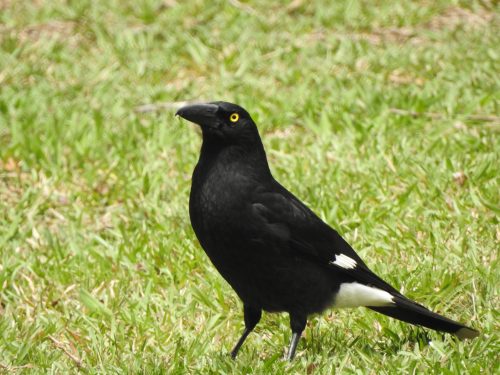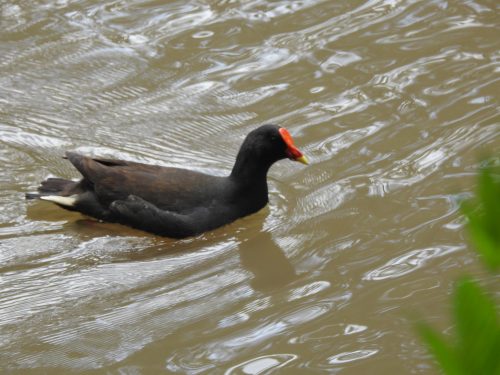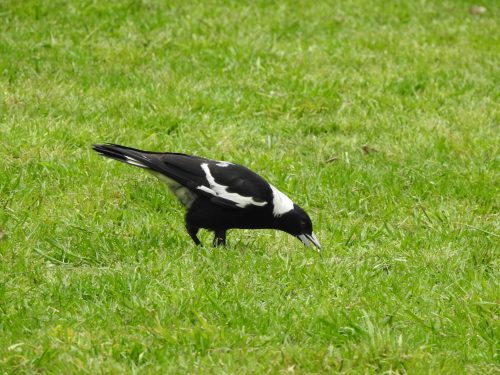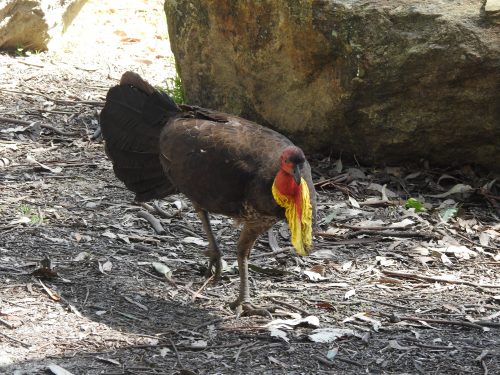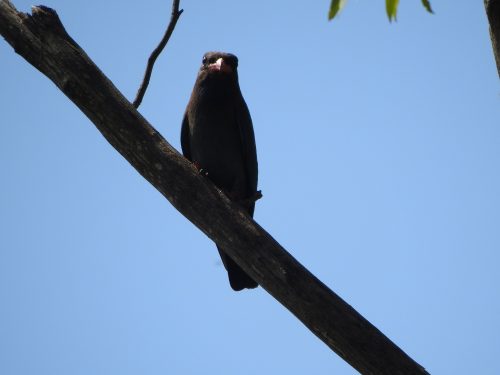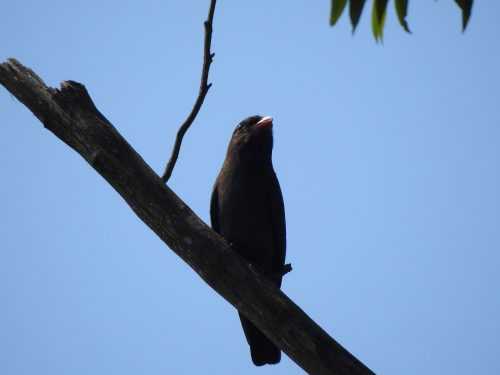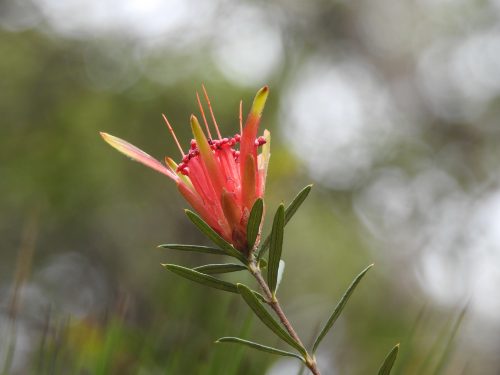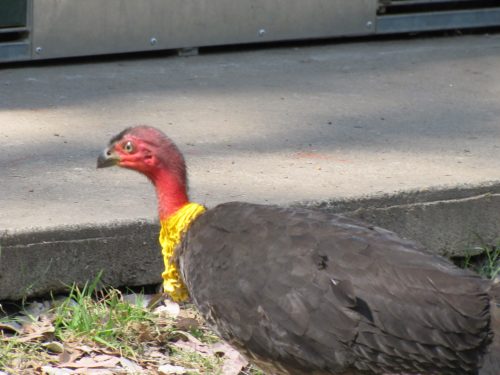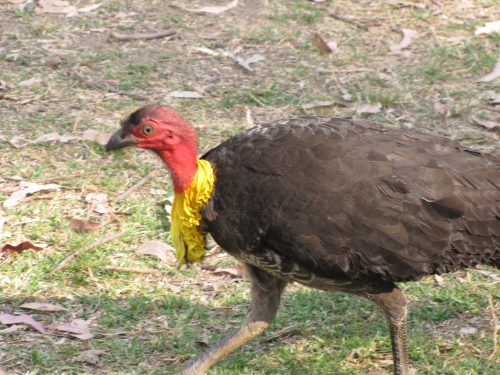Kookaburras up close
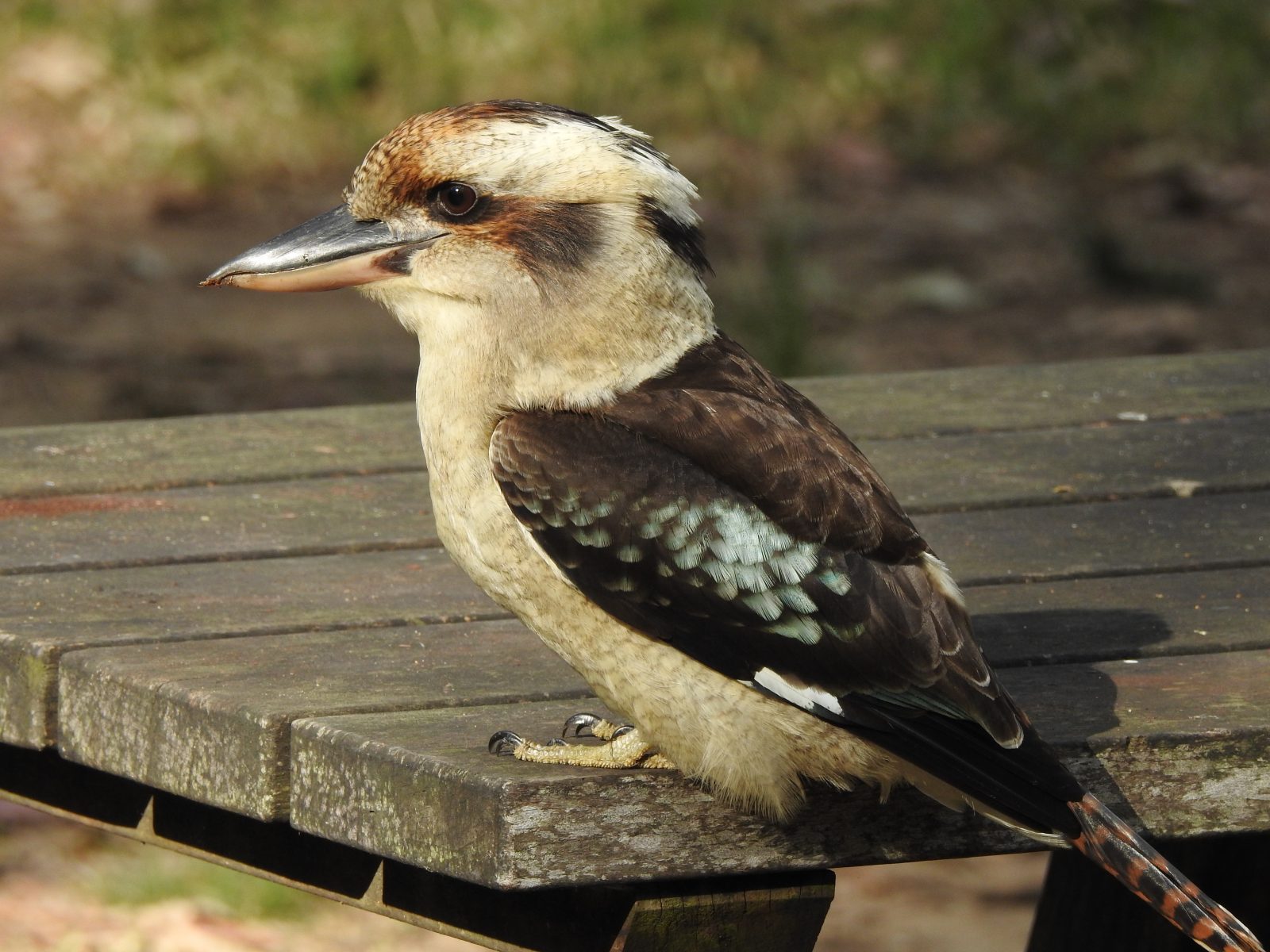
On many other occasions, I have written about my visits to Lane Cove National Park. This beautiful park is close to the Chatswood CBD just a short distance north of the Sydney Harbour Bridge. My son and his family live just a few minutes’ drive from the park, so I have taken many opportunities to visit and take photos of the birdlife, the flora and other interesting sights along the Lane Cove River which flows through the park.

On a visit earlier this year, I spent most of one day exploring the park and taking photos of anything that took my attention. At one point I lingered near a picnic table. There are many such tables in the park for the convenience of visitors. Two Laughing Kookaburras were attracted to something on the ground but I couldn’t work out exactly what they were so interested in – perhaps it was a beetle or some other insect. Or the remnants of a picnicker’s lunch.
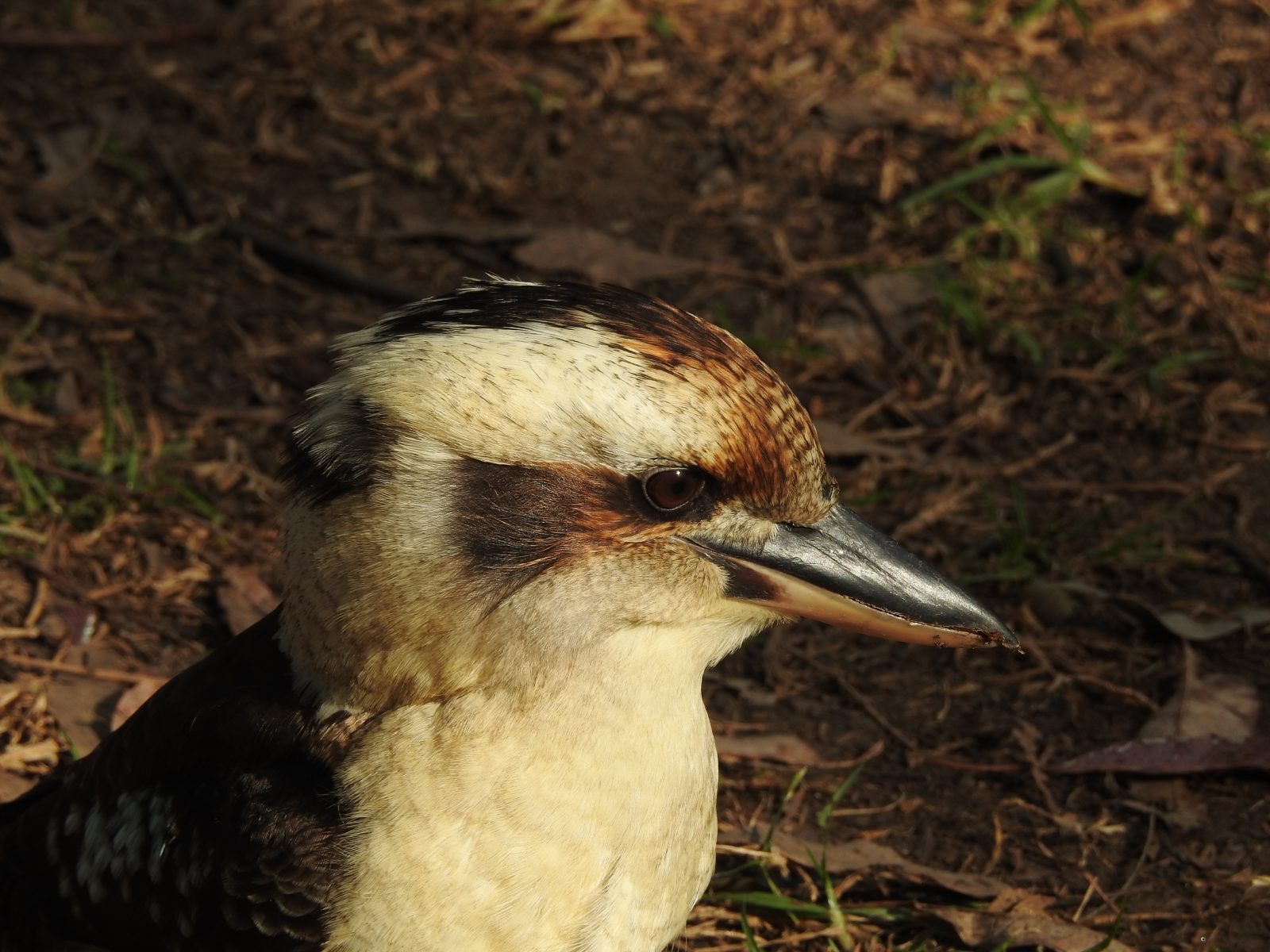
The two kookaburras kept squabbling over whatever had attracted their attention and consequently I was able to take quite a few closeup photos as shown in today’s post. I was able to get to within a metre or two of the birds so I really didn’t need the wonderful zoom facilities of my camera.
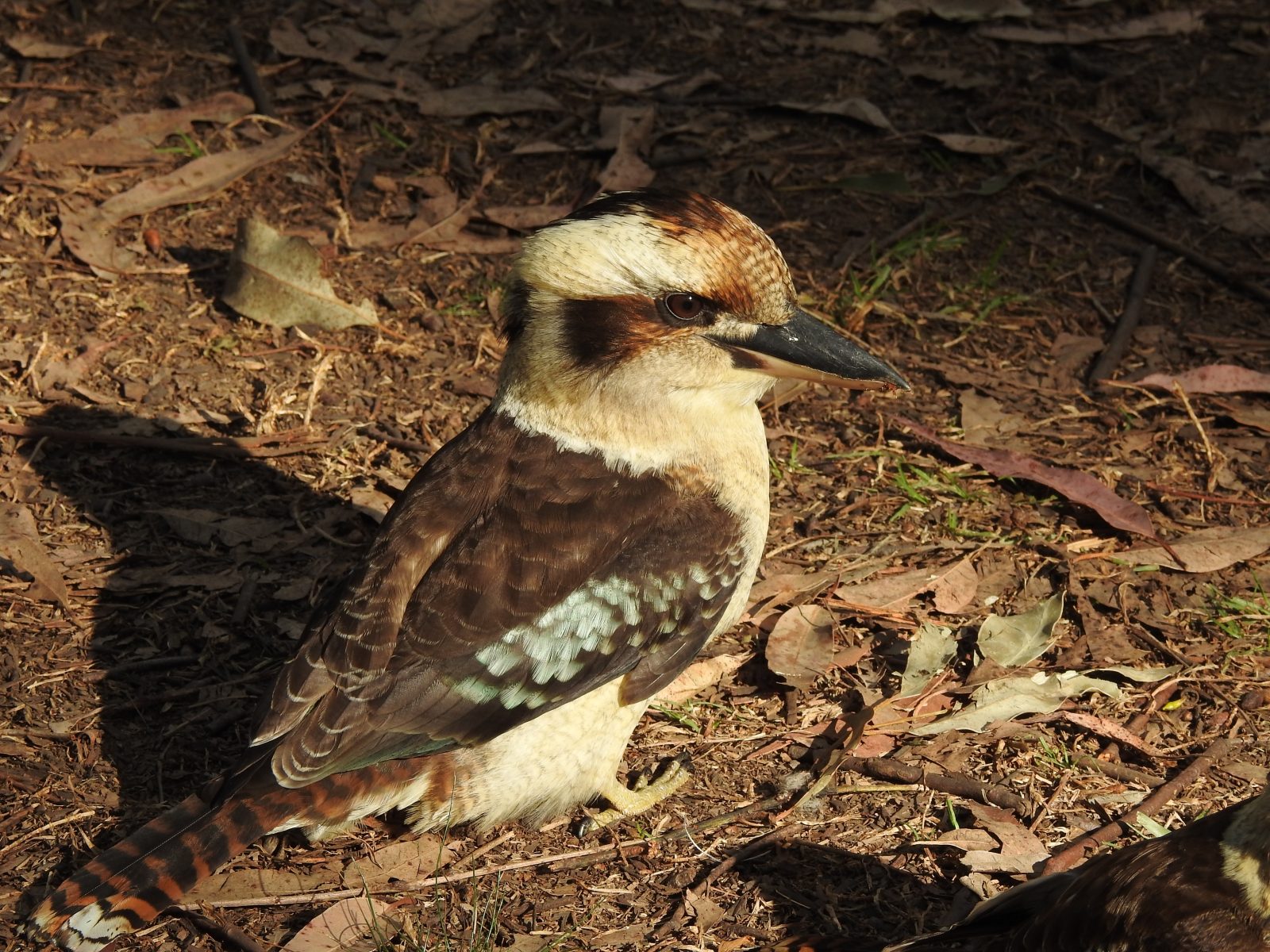
I kept on shooting until they decided to fly off. Visitors need to watch carefully for the kookaburras in this park, especially if they have food on their table or barbecue. On one occasion a kookaburra snatched part of a sandwich from alongside my wife while we were eating lunch.
On another occasion, my grandchildren were stunned when a kookaburra snatched a cooked sausage right off of the hot plate of a barbecue. They certainly are both opportunistic and cheeky.
Please leave any comments about your encounters with kookaburras or close encounters with other bird species.
Happy birding,
Trevor
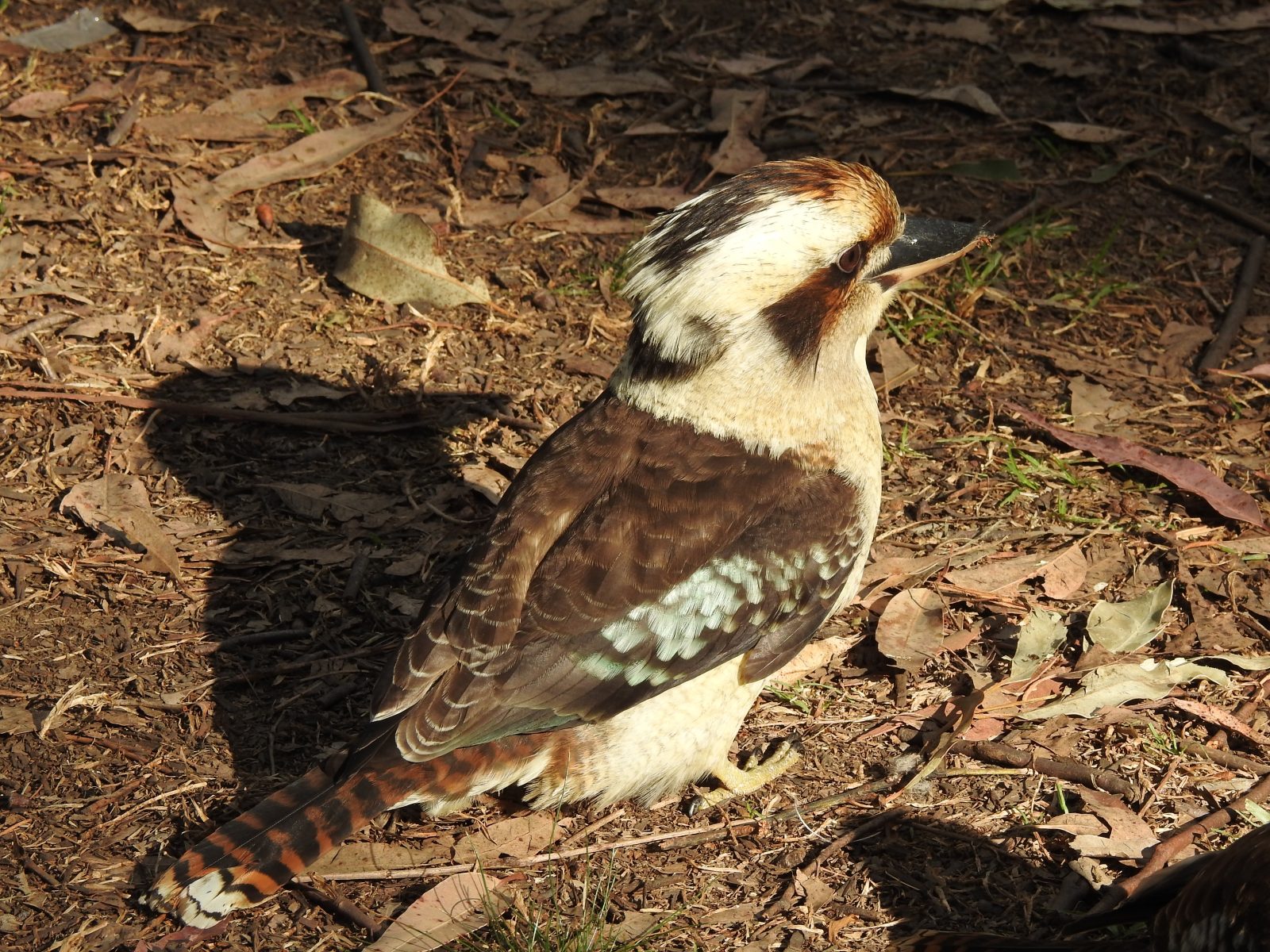


Some Birds of the Lane Cove National Park
Over recent days I have posted some photos and articles about some of the birds I saw and photographed last month on a visit to the Lane Cove National Park in Sydney. I have visited this park on many occasions over recent years because it is only about a ten-minute drive from my son’s home.
Today I wish to post a compilation of some of my other photos taken on that visit in October. The first photo (above) is of a handsome looking Pied Currawong. This is a common and sometimes noisy bird in the park. Because of its loud, forest-penetrating call and its large size, it is quite conspicuous. At home in Murray Bridge, SA, I have the Grey Currawong as a regular visitor to my garden. Although it is also a prominent bird, it lacks the stark colours of the Pied variety.
The quiet and unassuming Black-faced Cuckoo-shrike is another bird I have often seen in the national park. It quietly goes about its life without too much noise and fuss. Its quiet and lovely churring call is diagnostic. Although it is mostly coloured plain grey, in certain light conditions it can appear almost bluish. As a child growing up in rural South Australia I seem to remember that this species was called a ‘blue jay’ while the White-winged Chough was a ‘black jay.’ That makes a lot of sense. The Black-faced Cuckoo-shrike is another regular visitor to my home garden.
On my visit to the Lane Cove National Park last month I was surprised by the lack of water birds along the river. I saw a solitary Little Egret, several Pacific Black Ducks and about three Dusky Moorhens, one being shown in the photo above. I also saw several groups of Australian Wood Ducks along with a few ducklings but nothing else. No cormorants, coots, Purple Swamphens or other species of duck.
Throughout the Lane Cove National Park, one can also observe the black-backed sub-species of the Australian Magpie. This is the common magpie around the Sydney area. At home in Murray Bridge SA, I have the White-backed Magpie as a resident breeding species in my garden. While there are magpies throughout the Sydney region, they are nowhere near as common as I am used to in the rural areas of South Australia. That is a pity because so many people are missing out on hearing the beautiful song of the magpie.
My last photo today is of one of the most loved Australian Birds, the Laughing Kookaburra. Instantly recognised by most people, enjoyed by many upon hearing its hearty laughter, it is one of our iconic, much-loved national symbols.
What most people do not realise is that this seemingly delightful bird species has a darker side to it. On more than one occasion I have seen kookaburras take sausages off of a hot barbecue plate, snatch food from the picnic table at my side, defecate on a picnic table from a branch above, and generally harass picnickers for free handouts of human food.
Please don’t feed them deliberately as human food is actually detrimental to their health. Please do not feed any of our native birds and animals; it is not good for them.
I’ll get off my soapbox now.
Good birding.
Trevor
P.S.: I would love to hear from my readers about their close encounters with our bird species. Use the comments section below.
Brush Turkeys in Lane Cove National Park
It is my impression that the people of Sydney, and Lane Cove in particular, as heartily sick of the Australian Brush Turkeys which invade their gardens. Granted – I will accept that this species of bird can create a mess with their scratchings in garden beds though I have not experienced that myself. I do not live in Sydney but I do visit my son and his family in Artarmon once or twice a year. While this bird occasionally comes into my son’s backyard, it never causes any harm. That is probably because there is nothing much for them to destroy; it’s mostly trees or bushes and the few garden beds in the front yard are very bushy too.
Usually, while I am visiting I like to spend some time in the Lane Cove National Park where the species is usually seen, sometimes in numbers. On my most recent visit last month I spent about four hours birding in the park. In total, I think I saw 5 different turkeys during my stay. I always like seeing them and taking photos of them. While they may be commonplace, ordinary and a nuisance to local people, I find them fascinating. This is because we do not have this species where I live in Murray Bridge, South Australia (an hour east of Adelaide). There are several introduced populations on Kangaroo Island just off the south coast of South Australia.
To be quite honest, however, there have been a few occasions where I have felt annoyance with this species. You can read about that incident here. Or in the further reading articles listed below.
Good birding,
Trevor
Further reading:
Dollarbirds in Lane Cove National Park
Last month I had the delight of spending a few weeks in Sydney with my son and his family. During this time I had the delight of attending my grandson’s 10th birthday party. These are special times indeed. Once the children had returned to school, I was free during the day to do some exploring on my own. On one of those days, I spent about four hours in the nearby Lane Cove National Park, a wonderful spot just ten minutes’ drive away. It was a mild, sunny day with a delightful breeze.
During my stay, I explored a few of the many picnic grounds and walking trails along the main road through the park, Riverside Drive. I made a pleasing list of the birds seen and heard, taking photos of those which came within camera range. I also found a lovely spot to have a picnic lunch and a cup of tea, overlooking one section of the Lane Cove River which runs through the park.
After lunch I still had about an hour to spare, so I drove over to the other side of the river and slowly drove along the Max Allen Drive, parking at the end of this road. I still had some hot water in my thermos so I made another cuppa. While I was enjoying my afternoon tea, I heard the calls of a bird I did not immediately recognise. One of the two birds landed where I could see it. I immediately recognised it as a Dollarbird. This was only my second ever sighting of this species – the other sighting being last year at the same time of year and in the same national park.
The two birds flew around a little while calling to each other. One landed within range of my camera so I took the photos shown above and below. Despite waiting for quite a long time, neither of the birds landed in a sunny position but stayed with the sun behind. I could have walked to the other side of the tree, but that would involve walking on the river. This means that my readers cannot see the lovely colours on the feathers. You can see a much better photo and more information about this species on the Birdlife Australia site here.
The Dollarbird is so-called because of the round, white spots underneath each wing when flying. Early observers thought that these looked like silver dollar coins. They are very prominent underneath a flying bird. They are widespread in eastern and northern parts of Australia but are absent in my home state of South Australia. (There are occasional sightings but these are vagrant individuals and are not resident in my state.) This species is a member of the Roller family of birds, with 11 other species in the family worldwide. The family name “roller” comes from their courtship display while airborne.
Next time I am in Sydney, I hope that I can get better photos of this species. I have also included below some of the wildflowers in bloom in the national park during my visit.
Good birding,
Trevor
Further reading:
Harassed by a turkey
Brushturkeys are not everyone’s favourite bird. In fact, many people regard them as pests. This is especially so when the turkeys scratch around in their gardens. I believe that they can make quite a mess of a garden when they are making a nest mound to incubate their eggs.
On our recent trip to Sydney to stay with family, my wife and I had several occasions where we spent time in the nearby Lane Cove National Park. It is a lovely park with plenty of picnic areas for visitors. As a bonus, the park is only a ten-minute drive from where we were staying.
On one visit to the national park, we were relaxing near the river. We had enjoyed a hectic few weeks with our grandchildren – ages 9 and 6 – and we were just looking for a quiet time of relaxation. One of the resident Brushturkeys, however, saw us as easy pickings. It wandered around our chairs looking for a handout or two. When this wasn’t forthcoming, it jumped on the picnic table and began to scrounge around our things on the table (see photo below).
It actually tried to unzip our cooler bag. It was obvious that it had done this before and knew exactly what to do. It was unsuccessful because I chased it off. A few minutes later, it returned, this time attempting to open our biscuit tin. This was a beautifully decorated tin my wife had bought recently at the fair run by the school our grandchildren attend. It began scratching at the lid of the tin, attempting to open it. I again chased it off before it could scratch the tin. It was also in danger of moving the tin off the table and the lid may have opened on impacting the ground.
Pests
As I said at the beginning, many people regard these birds as pests. I admit that they can be very troublesome. I have a different point of view. I really enjoy seeing these birds when we come to Sydney, for the following reasons:
- We don’t have the species in South Australia where I live. (There is an introduced population on Kangaroo Island off the SA coast.)
- The birds have character and attitude. In heaps – and sometimes this character spills over into being annoying.
- They are easy to photograph – they come up close to humans and are generally unafraid.
Good birding.
Trevor
